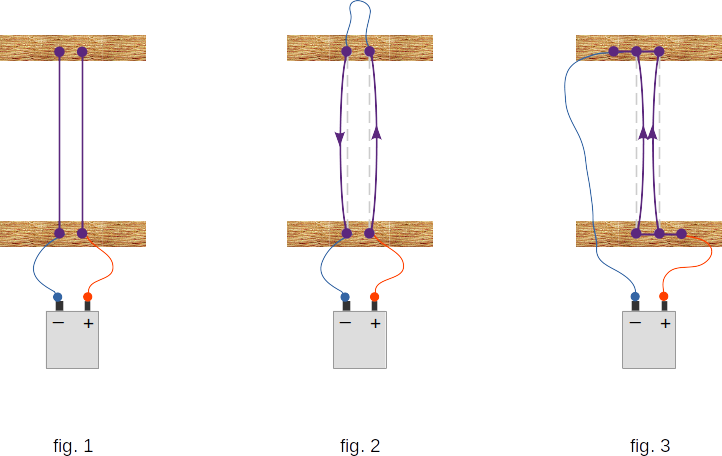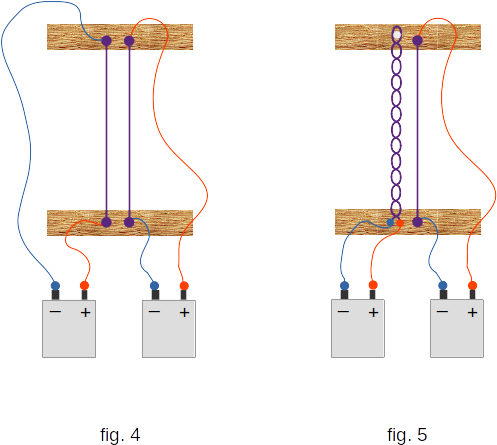From the Magnetic field of currents
120. Magnetic interaction
Between static electric charges there are forces determined by the law of Coulomb. According to the theory of proximity, this interaction is performed as follows:
- there's an electric field around each of the charges;
- the field of one charge acts on the other charge and vice versa.
However, between the electric charges may exist and the forces of a different nature. These forces are not the same as electrostatic interaction.
Let us remember the experience (see "Physics Books · One") with the help of which one can detect the magnetic action of an electric current. Let's take two flexible conductors and connect them, strengthening vertically, to the poles of the electric current source (fig. 1). No noticeable attraction or repulsion of the conductors will be detected in this case. But if the other ends of the conductors are closed with a wire in such a way that electric currents of the opposite direction appear in the conductor (fig. 2), the conductors will start to push off each other. In the case of electric currents of the same direction, pull forces occur between the conductors (fig. 3).

The appearance of these forces of non-electrostatic nature was apparently caused by the movement of charges. At change of direction of electric current (direction of movement of charges) in one of conductors the attraction between conductors is replaced by repulsion and vice versa. Experience shows that if the electric current flows through only one conductor, there are no interaction forces between the conductors (fig. 4). In the same way, no interaction is detected if one of the wires is a twisted pair of two wires on which the same electric currents flow in opposite directions (fig. 5). Thus, the closely located equal but oppositely directed electric currents behave in the same way as a conductor in which there is no electric current. They do not detect any magnetic action.
